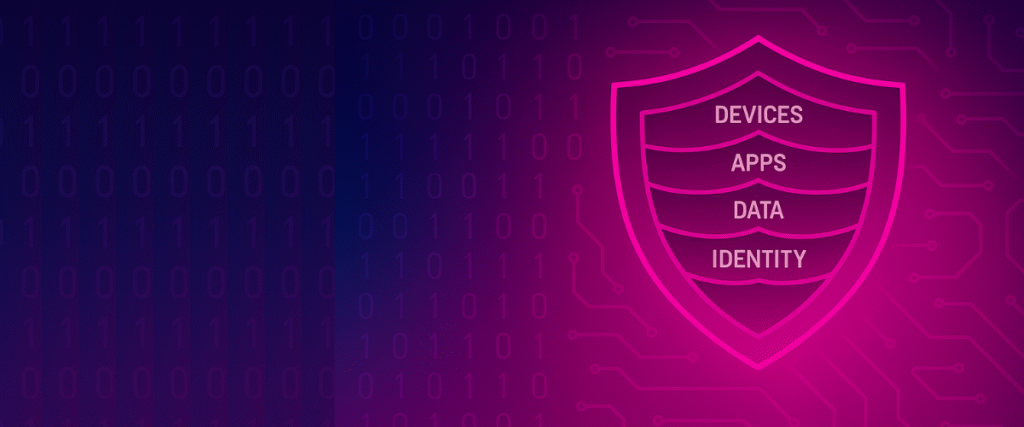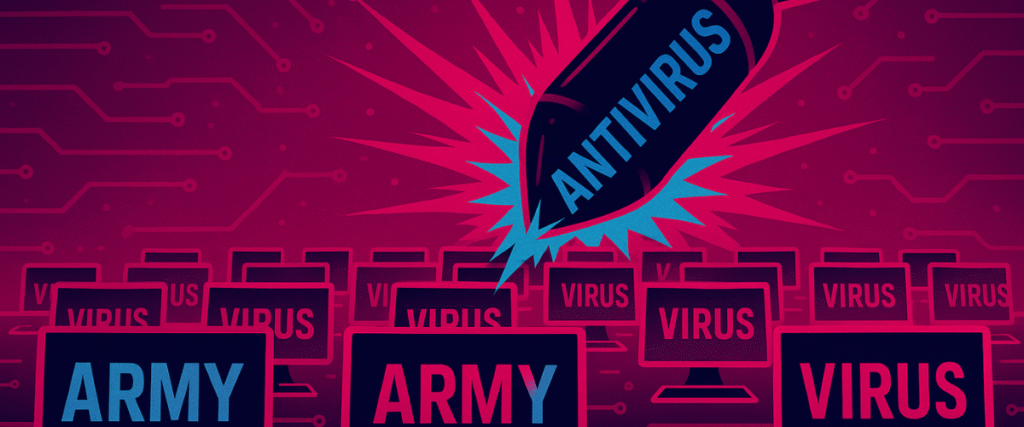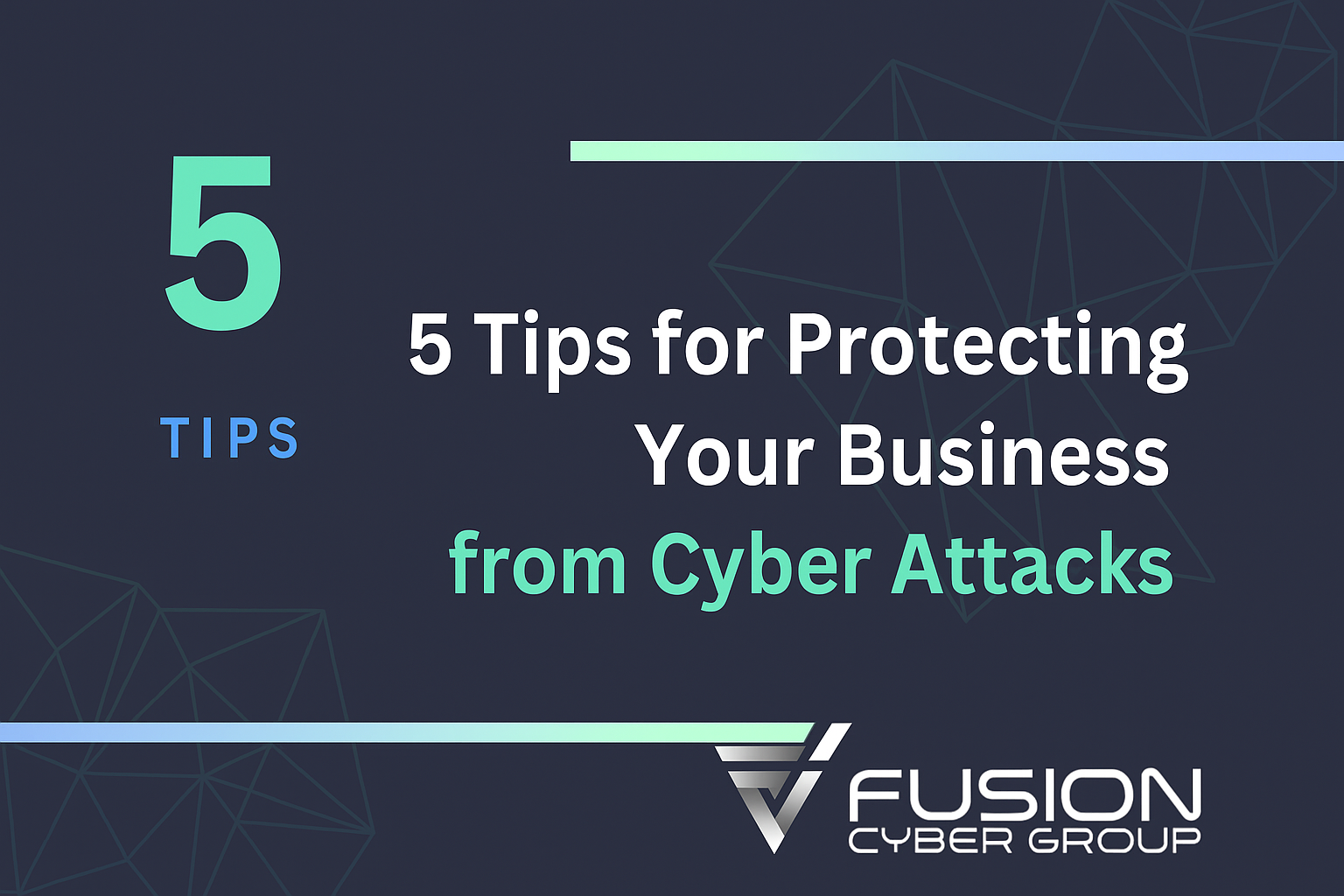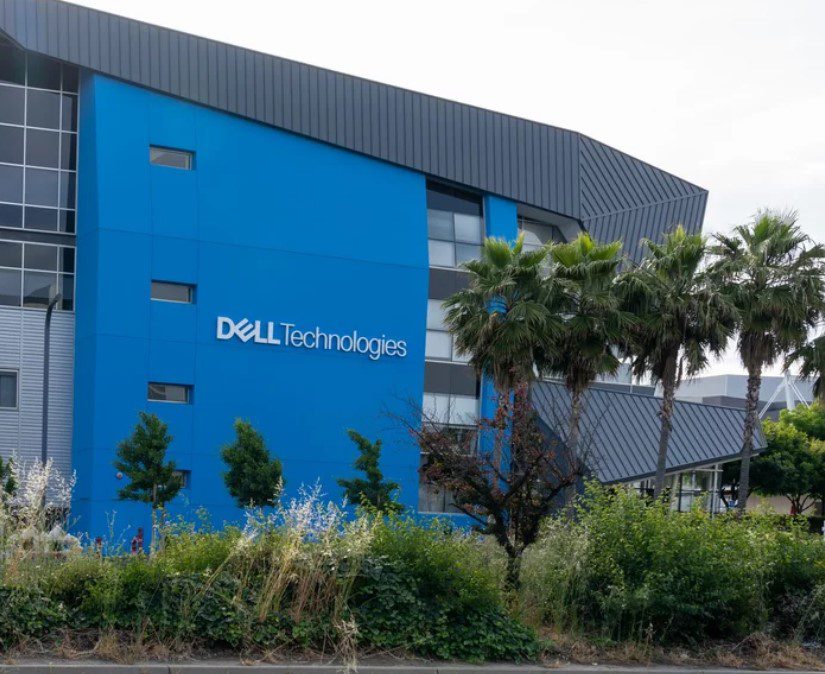
Cloud Security for SMEs — Big Advantages, Bigger Risks
Cloud adoption boosts productivity, scalability, and flexibility—but also introduces new cyber risks.
Don’t leave your data exposed. Talk to a FusionCyber expert and secure your cloud environment today.
Cloud Security: A Growing Risk for Growing Businesses
The rise of cloud computing has transformed how small and medium-sized enterprises operate. Once limited by on-premise infrastructure and constrained IT budgets, SMEs now leverage cloud platforms to access enterprise-grade technology, support remote work, and scale rapidly without massive upfront costs. Whether through Infrastructure-as-a-Service (IaaS), Software-as-a-Service (SaaS), or hybrid environments, SMEs rely on the cloud for everything from email to mission-critical applications. But with increased flexibility comes increased exposure.
As workloads migrate to the cloud, cybercriminals are adapting. They no longer need to breach a corporate network perimeter when they can target poorly secured cloud environments. Attack vectors have shifted: from brute-force attacks and malware to more nuanced threats like credential theft, phishing, supply chain compromises, and misconfigurations. According to IBM’s 2023 Cost of a Data Breach report, the average cost of a cloud-related breach now exceeds $4.5 million. For SMEs, even a fraction of that is financially devastating.
One of the most overlooked aspects is shared responsibility. Cloud providers like AWS, Microsoft Azure, and Google Cloud secure their infrastructure, but the responsibility for securing data, user access, and configurations falls squarely on the customer. Many SMEs mistakenly assume their cloud provider handles security end-to-end. This gap creates vulnerabilities that attackers routinely exploit. Without clearly defined internal ownership or a partner to manage these risks, SMEs are exposed to breaches they may not be equipped to detect or mitigate quickly.
In addition, regulatory obligations are increasing. Canadian SMEs must now comply with frameworks like Law 25 in Québec, which mandates strict rules around consent, data localization, encryption, and breach notification. Businesses operating in other provinces may face additional requirements under PIPEDA or industry-specific standards like HIPAA or PCI-DSS. As regulatory scrutiny intensifies, cloud security isn’t just a technical issue—it’s a legal and business continuity concern. Without strong controls, SMEs risk fines, downtime, data loss, and reputational damage that can erode customer trust and long-term viability.
How Attackers Target the Cloud
Cybercriminals adapt to the technology landscape faster than many businesses can react. As more data and systems move to the cloud, attackers have refined their techniques to exploit the inherent weaknesses in how SMEs adopt and use cloud platforms. These are not always sophisticated attacks—in fact, the most successful breaches often rely on simple missteps: weak passwords, over-privileged accounts, unpatched software, or employee negligence.
One common tactic is the exploitation of misconfigured cloud storage buckets. Public cloud environments often default to open access settings or offer flexibility that inexperienced users misuse. A misconfigured Amazon S3 bucket, for example, may expose entire datasets to the public web. These vulnerabilities are easily discovered using automated tools, and attackers continuously scan for them.
Credential stuffing is another prevalent method. By leveraging stolen username-password pairs from unrelated breaches, attackers test these combinations against cloud services, banking on users reusing passwords. SMEs, which often lack enterprise-level IAM (Identity and Access Management) systems, are prime targets. Without multi-factor authentication (MFA), a successful login can provide full access to sensitive systems.
Phishing and social engineering remain top threats as well. Attackers impersonate cloud service providers, vendors, or internal staff to trick users into revealing access credentials or clicking malicious links. Once inside, they can move laterally, establish persistence, and exfiltrate data without detection.
These attacks are especially effective when SMEs lack visibility into their cloud environment. Many do not have centralized logging, SIEM (Security Information and Event Management) systems, or a defined incident response plan. As a result, breaches may go unnoticed for days or weeks—ample time for attackers to inflict significant damage.

What Cloud Security Really Means
Cloud security is a broad discipline that encompasses technologies, processes, and people working together to protect data, systems, and applications hosted in the cloud. It is not a single solution, but a layered strategy that addresses different risk domains.
Network and Infrastructure Protection involves implementing firewalls (both traditional and next-generation), intrusion detection systems (IDS), intrusion prevention systems (IPS), and cloud-native security controls offered by platforms like AWS Shield or Azure Defender. For hybrid environments, tools like Cloud Access Security Brokers (CASB) bridge the visibility gap between on-premise and cloud assets.
Identity and Access Management (IAM) is essential for controlling who can access what. This includes enforcing strong password policies, implementing multi-factor authentication (MFA), provisioning access based on roles (RBAC), and auditing permissions regularly. Poor IAM practices are a leading cause of cloud breaches.
Data Security in the cloud requires encryption at rest and in transit, but also extends to managing access permissions, maintaining data classification standards, and using tools like tokenization and data loss prevention (DLP) software. In regulated industries such as finance or healthcare, additional controls are often required.
Application Security focuses on securing the software that runs in your cloud environment. This includes performing code reviews, vulnerability scanning, and using Static and Dynamic Application Security Testing (SAST and DAST) to detect flaws during development and after deployment. DevSecOps principles can also be integrated into the CI/CD pipeline.
Endpoint and Mobile Security is increasingly relevant as employees use personal or unmanaged devices to access cloud applications. Mobile Device Management (MDM), endpoint detection and response (EDR), and zero trust policies help ensure that endpoints don’t become backdoors into critical systems.
Ultimately, cloud security must be proactive. It requires continuous monitoring, threat hunting, and regular updates to policies as business needs and threats evolve.
Technology Alone Isn’t Enough
While cloud providers offer increasingly robust security features, relying on technology alone creates a dangerous blind spot—especially for small and medium-sized enterprises (SMEs). Cyber risk is not purely technical. It’s operational, behavioural, and often cultural. Most successful attacks exploit human behaviour: an employee reuses a password, a manager clicks on a fake invoice, or an IT admin misconfigures a cloud instance. These aren’t anomalies—they are consistent attack vectors that bypass even the most advanced technical defenses.
A mature cloud security posture requires embedding cybersecurity into day-to-day operations and company culture. Employees must be trained not just on what to do, but why it matters. They need to understand the value of the data they handle, recognize red flags, and respond quickly to incidents. This means going beyond annual awareness courses. Organizations should implement continuous learning through simulated phishing attacks, real-world threat briefings, role-specific training, and embedded reminders. Cybersecurity becomes part of the routine, not an afterthought.
Process is equally important. Security governance must be clearly defined, with written policies and assigned roles. Who is responsible for cloud access control? Who oversees patching, logging, and escalation? Without accountability and structured workflows, even the best tools go underused or misapplied. Documentation, auditing, and regular reviews should be part of every SME’s cloud playbook.
FusionCyber’s managed services are built with this reality in mind. We combine best-in-class technology with mature operational processes tailored to SME environments. Our team delivers security awareness training, implements least-privilege access models, and continuously monitors your cloud estate with human-led analysis. We proactively guide clients through incident response plans, compliance reporting, and remediation. The result: a resilient security posture that reduces both technical and human risk. With FusionCyber as your partner, nothing important slips through the cracks.

The Benefits of Fully Managed Cloud Security
For SMEs, maintaining a secure cloud environment without external support is increasingly difficult. The threat landscape is evolving, compliance requirements are rising, and cyber talent is scarce. Fully managed cloud security services provide a practical path forward, enabling businesses to stay protected without needing to build a dedicated internal cybersecurity team.
FusionCyber offers a comprehensive managed security stack that includes real-time monitoring, vulnerability management, threat detection, incident response, and regulatory reporting. Our Security Operations Centre (SOC) monitors client environments 24/7, providing actionable alerts and immediate containment in the event of a threat. We don’t just provide alerts—we take action to remediate incidents in real time, reducing mean time to detect (MTTD) and mean time to respond (MTTR), which are critical for limiting the scope of a breach.
Clients benefit from:
- Reduced risk of downtime and data loss
- Faster response to emerging threats
- Consistent compliance with legal and regulatory obligations
- Predictable, scalable security costs
- Access to specialized cybersecurity expertise without the cost of full-time hires
- Continuous improvement through trend analysis and regular reporting
Our service is backed by a cybersecurity guarantee: clients fully onboarded to our recommended stack receive incident response and recovery at our expense in the event of a breach. This aligns our interests with yours—we are financially invested in keeping your business secure.
Additionally, we provide tailored cloud security strategies that map directly to your business goals and compliance requirements. Whether you’re working in finance, healthcare, manufacturing, or legal services, our team aligns controls to industry-specific frameworks like HIPAA, PCI-DSS, or Law 25. We handle risk assessments, policy enforcement, and evidence collection for audits—reducing your operational burden and improving your compliance posture.
Managed cloud security allows SMEs to focus on core operations. Instead of reacting to every alert or patch cycle, business leaders gain peace of mind knowing their cloud environment is continuously protected, proactively optimized, and backed by a team that specializes in staying ahead of cyber threats.
Key Takeaways for Business Leaders
For executives and business owners, cloud security should no longer be treated as a backend IT function—it’s a critical strategic concern. Your cloud environment houses your sensitive data, client records, intellectual property, and essential services. The choices you make now directly affect your company’s risk exposure, ability to grow, and regulatory posture. Cybersecurity is no longer the domain of IT departments alone—it demands executive ownership.
First, understand that cloud adoption transfers, but does not eliminate, security responsibilities. Your provider secures their infrastructure, but your team remains responsible for securing accounts, data, access permissions, and usage. Failing to enforce MFA, restrict user access, or monitor cloud activity is equivalent to leaving the office door unlocked. Leaders must support IT teams by allocating budget and resources to address these gaps.
Second, invest in visibility. Without tools like CASB, SIEM, or endpoint telemetry, it’s difficult to know who is accessing what, from where, and why. Cloud breaches often go undetected not because of technical complexity, but because no one is watching. Leadership must insist on monitoring and reporting that aligns with business priorities. Dashboards, audit logs, and alerting workflows should be established and reviewed regularly by both technical and executive teams.
Third, integrate cybersecurity into operations. Waiting until a breach happens to prioritize security is reactive and expensive. Instead, make cloud security part of daily workflows. Ensure that onboarding processes include access reviews, data protection standards, and user training. Build a culture where risk awareness is expected, not exceptional. This may require formalizing cybersecurity roles in HR, legal, and finance—not just IT.
Fourth, work with the right partners. Most SMEs lack the time, staff, or tools to fully secure complex hybrid environments. That’s where MSSPs like FusionCyber add value. We extend your internal capabilities, helping you meet regulatory standards, reduce risk, and scale confidently without hiring a full security team. A trusted MSSP should be treated as a strategic advisor—not just a vendor.
Finally, treat cybersecurity as a business enabler. Clients, partners, and regulators are watching. A strong security posture builds trust, opens new markets, and increases your ability to win contracts. The cost of inaction is far greater than the investment in prevention. As digital transformation accelerates across sectors, security maturity will become a competitive differentiator for SMEs.

Final Thoughts
Cloud computing has become essential to business agility and innovation, but without security, it becomes a liability. The convenience and scalability of cloud platforms also introduce complexity, especially when SMEs manage multiple services across vendors with limited oversight. Every new user, app, or integration increases your attack surface. And without a strategic approach to governance and visibility, small missteps become open doors for threat actors.
SMEs must recognize that the cloud doesn’t eliminate their security responsibilities—it simply reshapes them. The shared responsibility model puts the onus on the business to secure data, access controls, configurations, and user behaviour. Failing to do so not only risks data loss or downtime but can trigger costly regulatory fines and erode customer trust.
A strategic cloud security posture combines the right tools, the right processes, and the right partners. It ensures your data is safe, your services stay online, and your business reputation remains intact. More importantly, it provides a foundation for growth by removing barriers to compliance, customer trust, and digital transformation.
FusionCyber helps SMEs transition from exposed to secure with tailored, scalable solutions. We bring deep technical expertise, proven frameworks, and hands-on support to help you navigate the cloud securely and confidently. Our managed security model takes the burden off your internal teams and closes the gaps that attackers seek to exploit.
Security is not just about preventing breaches. It’s about enabling trust, ensuring uptime, and proving to customers and regulators that your business takes cyber risk seriously. This isn’t optional—it’s fundamental to long-term success.
Featured links:
FAQ:
Why is cloud security critical for SMEs?
SMEs increasingly rely on cloud platforms for core operations. Without proper protection—covering access, configuration, and user behaviour—the convenience becomes a liability. Cloud security helps prevent data loss, service disruptions, and regulatory penalties.
Who is responsible for securing the cloud?
In the shared responsibility model, providers secure infrastructure, but customers must secure data, access, configurations, and user behaviour. SMEs cannot outsource accountability simply by using cloud services.
How often should cloud security training be provided?
Annual training is not enough. Provide continual education with phishing simulations, threat updates, and user reminders integrated into daily workflows to build security awareness and minimize human error.
What are the compliance benefits of managed security?
Managed services simplify compliance by enforcing encryption, logging access, and generating audit-ready reports. This supports frameworks like Law 25, PIPEDA, HIPAA—reducing the legal burden on SMEs while building client trust.

Fun Fact – Cloud Misconfigurations
Misconfigured cloud storage is alarmingly common: over 70% of data breaches are linked to publicly exposed cloud assets. These missteps are often due to overlooked default settings. The good news: they’re also one of the easiest flaws to fix. A simple audit or automated scanning tool can discover and close these doors—making modest effort highly impactful for SMEs.

Expert Prediction – AI-Assisted Threat Detection
Analysts predict AI-driven monitoring will become mainstream in SME cloud protection by 2026. With cloud environments generating immense telemetry, AI and machine learning will help identify patterns humans miss. Expect tools that flag unusual configuration changes, abnormal access, and subtle behaviour drift—supporting lean IT teams with smarter, automated vigilance.

Real‑World Example – Breach via Shadow IT
A mid‑sized firm once faced a serious breach through an unsanctioned file‑sharing app employees used for convenience. The misconfiguration exposed sensitive client data before IT caught it. The fix? A Cloud Access Security Broker (CASB) was deployed, shadow‑IT was tracked, and policy updates enforced. This prevented future blind‑spot breaches and highlighted the need for visibility over convenience.
Our Cybersecurity Guarantee
“At Fusion Cyber Group, we align our interests with yours.“
Unlike many providers who profit from lengthy, expensive breach clean-ups, our goal is simple: stop threats before they start and stand with you if one ever gets through.
That’s why we offer a cybersecurity guarantee: in the very unlikely event that a breach gets through our multi-layered, 24/7 monitored defenses, we will handle all:
threat containment,
incident response,
remediation,
eradication,
and business recovery—at no cost to you.
Ready to strengthen your cybersecurity defenses? Contact us today for your FREE network assessment and take the first step towards safeguarding your business from cyber threats!





















































































